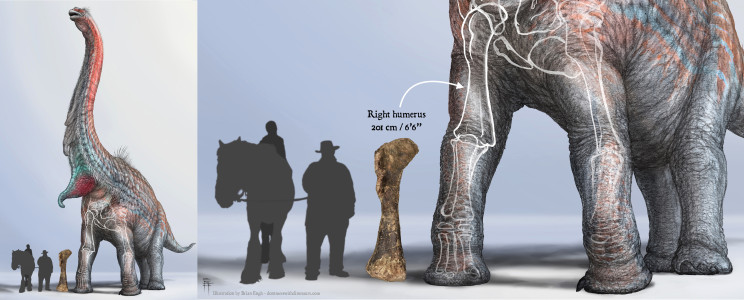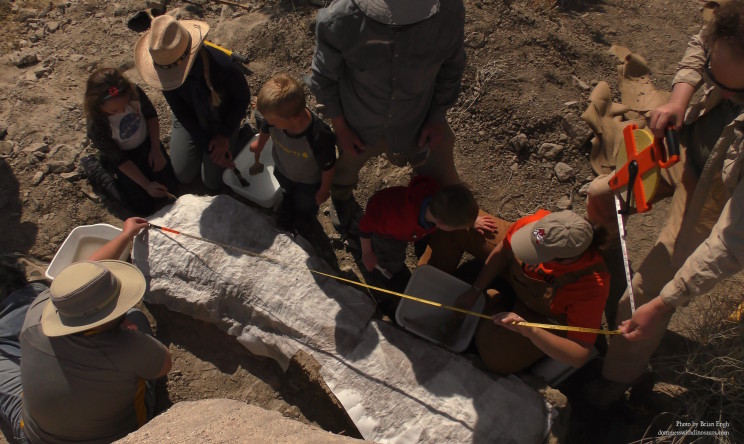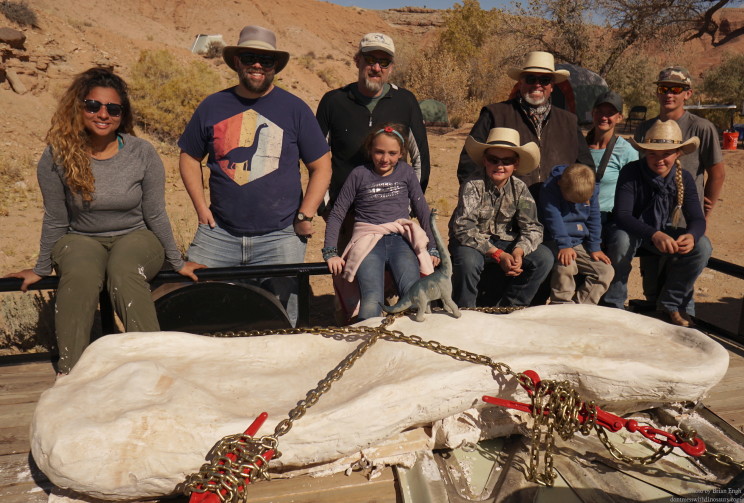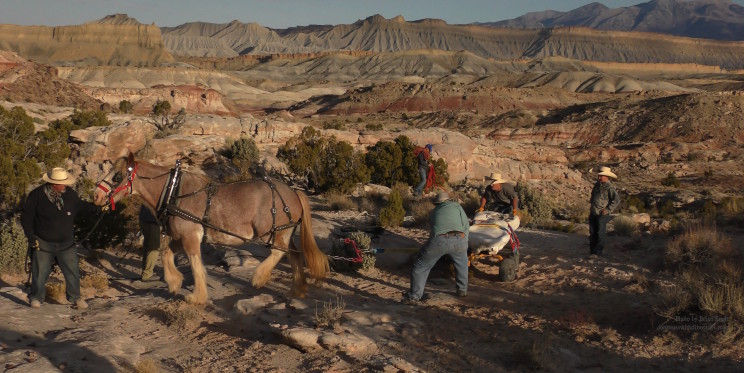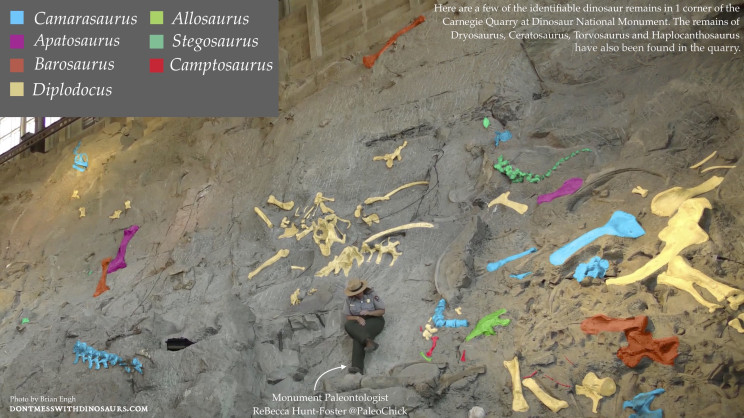We found a Brachiosaurus
I stumbled accross something big in the Morrison.
Here’s ReBecca Hunt-Foster, Monument Paleontologist for Dinosaur National Monument, long-time collaborator/client and person who got me involved in field paleontology, next to it for scale, while it’s still in the ground:
For those of you who like measurements, it’s 201 cm long. Aka about 6 feet 7 inches. It’s really goddamn big. And even more goddamn rare.
Turns out, our Brachisoaurus is only the 11th specimen of this famous dinosaur ever found. And they’re all really incomplete.
I’ve been working around the clock for the past two months trying to finish my documentary on the Morrison Formation “Jurassic Reimagined”, spurred on by today’s coming press release. Between the difficulty of telling the complex story of the Morrison and the surprising diversity of other creatures we found in the Morrison’s Salt Wash Member (this is just the biggest) finishing all the parts of the doc by today in a coherent and compelling way proved impossible. But that’s a pretty good problem to have, and I look forward to sharing the full story of this Brachiosaurus’ discovery and excavation, along with the discovery of numerous other dinosaurs and other clues about the ancient environment of the Morrison they all lived in. For now here’s a few pictures and images as an early look.
This Brachiosaurus was found while surveying in the Morrison of Utah with Matt Wedel and Thuat Tran. For more sneak peaks about what we found nearby, check out Matt Wedel’s blog SVPOW.
The excavation was made possible by a joint effort between Matt Wedel/Western University of Health Sciences, John Foster/the Utah Field House of Natural History in vernal Utah, myself, Dinosaur National Monument paleontologist ReBecca Hunt-Foster, paleontologist Yara Haridy, my friends Casey Cordes and Mallerie Niemann, and – without a doubt the most important segment of the workforce – the Bartlett family from Naples Utah and their two Clydesdale horses Molly and Darla.
When we got it back to the Utah Field House of Natural History (where you can now see it on display) the bone in the jacket weighed 1012 lbs. It was probably a few pounds heavier when we were actually getting it out though because the plaster was still damp.
Funding to hire the Bartletts on with their horses came from the Friends of the Utah Field House group in Vernal Utah. Absolutely every member of this team and every bit of equipment and ingenuity went into this difficult extraction. Because the bone was found in sensitive desert habitat in a remote gulch on Utah State land, we couldn’t take vehicles out to the site. The site isn’t terribly easy to hike to without a thousand pounds of fossils, so the engineering and logistics of extracting something that big proved fairly daunting. But (somehow) we (barely) pulled it off, and we documented every step of the way.
I can’t wait to show you.
In case you missed it, Jurassic Reimagined part 1 is here:

